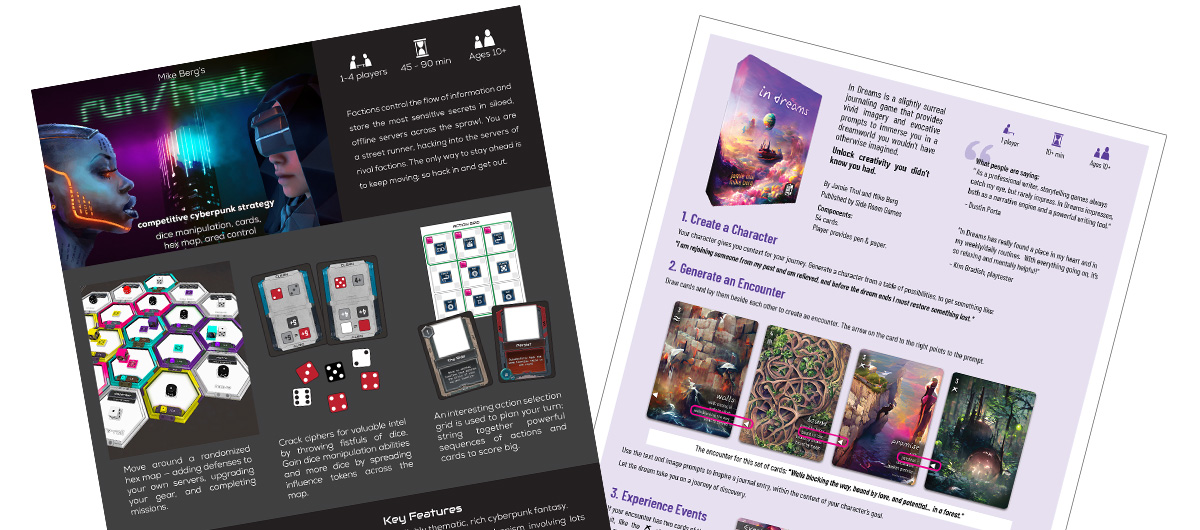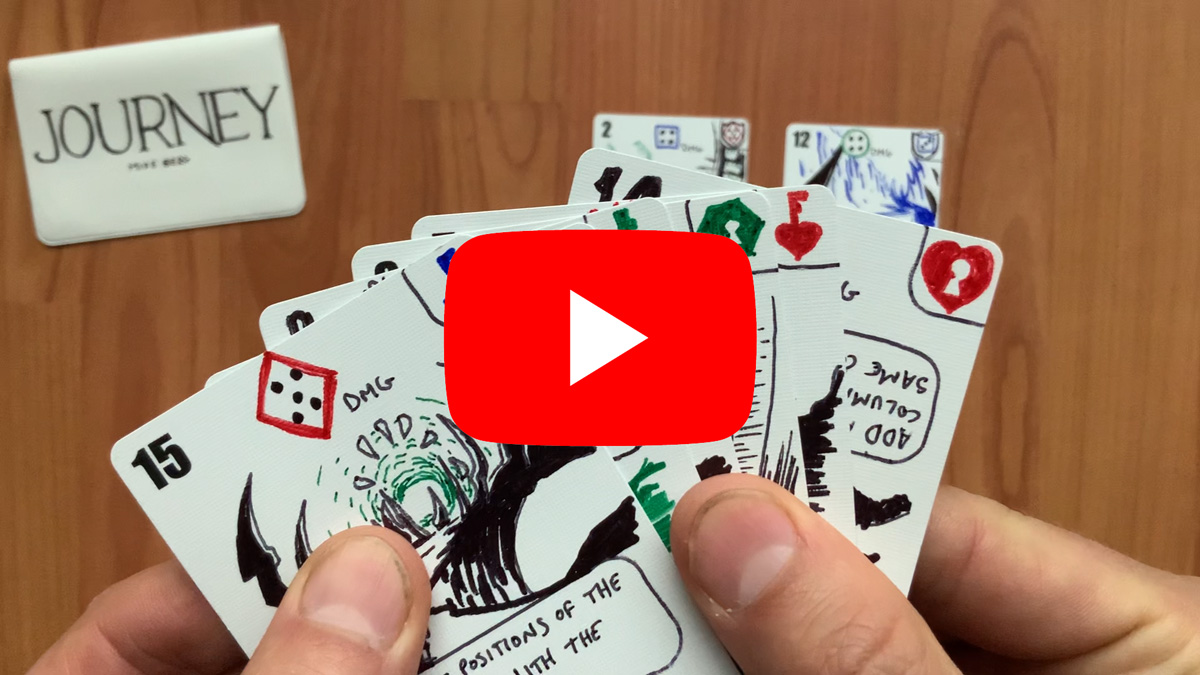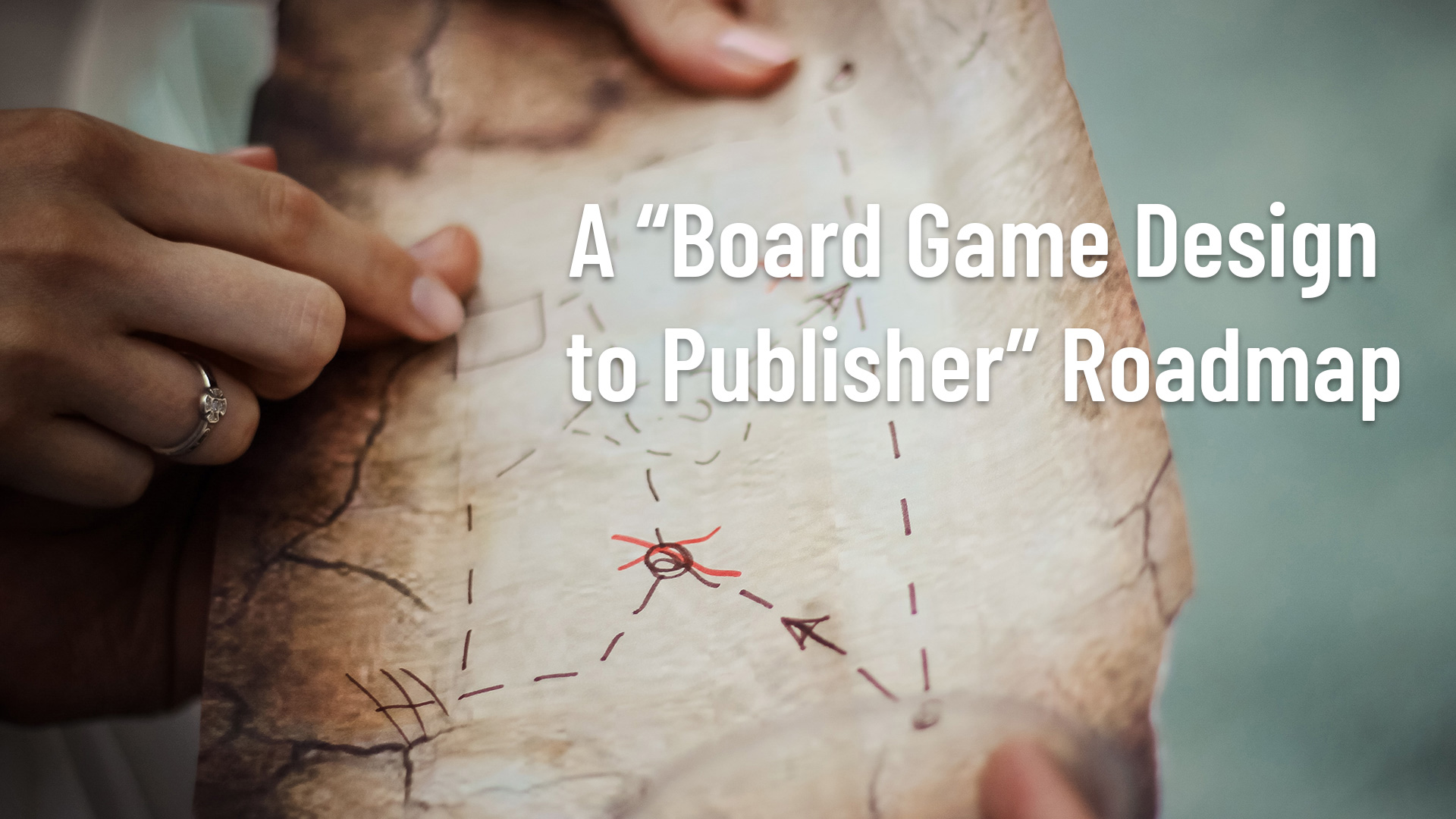These are the steps I follow when I’m working on a board game design and I think it might be “publisher-worthy”. Sometimes I give games away for free on itch.io, but sometimes I’ll be working on a game idea that is telling me it can go farther.
1. Share the game!

Share a link to a Dropbox (or similar) folder that has the rules, PNP, and anything else necessary to try it, such as a link to a digital version. Many first-time designers are hesitant to do this, fearing their game will be stolen. The risk of that is basically non-existent, and publicly posting something actually puts your flag in the ground and gives you something to point at to say, “Look! I was working on this game.”
The goal is to get as much feedback as you can to evolve, refine, build, and cut things out of the game. If you share the game around and listen to the feedback you get — you don’t have to follow it all, but definitely listen to it all — your game will improve. Promise.
Working on a game in isolation is denying yourself so many other perspectives and possibilities for improvement. You’re also denying your game the buzz that can tend to build around games that are in development. Many BGG WIP threads have been a powerful marketing tool for the game they feature.
2. The sell sheet

If you get consistently positive feedback from playtesters, and you feel like the game is pitch-ready, start working on a sell-sheet. This is something that you should also include in that Dropbox folder, because iterating and refining that is just as important as iterating on the game.
A good sell sheet is an art unto itself; there are other articles out there that will be able to better describe how to make one. Get feedback from other designers; this is important.
Don’t forget to keep playtesting.
3. The pitch video

Then you’ll want to start working on a script for a 2-minute pitch video.
A 2-minute script is hard to write! It should include:
- Your name, name of game, type of game, # of players, length of game
- Very quick overview of the game. Introduce the game without talking about rules.
- What makes the game special/different; what’s the best part of the game.
Again, get feedback on this script before you even record it.
I record the voiceover first, then record video (using a PNP version OR a digital version, whichever gets the point across, doesn’t matter). Look at your script and record video clips that will go with each section of the voiceover. Sometimes I even play the VO on my computer while I record the video, if I think timing of gestures & movements will be important. I find doing the VO and video separately helps me concentrate on what I’m doing with my hands when I’m recording the video, and also prevents fumbling over my words and/or actions.
Import the VO and the video clips into a video editing tool and splice them all together. Sometimes clips will need to be sped up or slowed down to match the VO; that’s ok. Add text and other visual callouts such as arrows and circles only where it’s helpful to do so.
Include a way to contact you and a link to your PNP/digital version in the description of the video.
Also: keep playtesting.
4. The email
Come up with a good “cold opener” to put in your emails. This is a 2-3 line elevator pitch that describes the game. Could be very similar to your pitch video script, but can be a bit more casual.
Hello!
[game name] is a [game type] game for [player count] that plays in [game length]. What makes it different is [standout feature].
If that sounds interesting to you, here’s a link that has a sell sheet, PNP, and digital version: [link], and here’s a 2-minute pitch video: [direct YouTube link]. If you would like to see the game in more detail, I’d be happy to schedule a time to show you the digital version.
Thanks for your time!
-[your name]
5. The publisher
Look for a board game publisher that is making games “kind of like” your own. You can do this on BGG by searching for similar mechanics and themes using their advanced search, or you can pay (it’s not much) for access to Cardboard Edison’s publisher directory. They list pubs who are actively looking for submissions, what their submission process is, and even what types of games they are looking for. Well worth it.
If you’re in a game design community, ask around to see if anyone knows of any publishers who might be interested in the type of game you have. A personal recommendation is very valuable!
Keep an eye on Twitter; publishers sometimes post a call for submissions, sometimes with the specific type of game they are looking for. If you can catch someone who’s actively looking for what you’ve got, that’s an excellent — though naturally rare — opportunity.
Make a list and start sending those emails! I’ll even keep a spreadsheet of who I’ve contacted and when, so I know when to follow up with a polite reminder, if I haven’t heard anything back in a week or two. If I don’t hear back after that, I don’t follow up again.
Make no mistake, this part is work. It can be a long road, and discouraging to get rejection letters. Just know that everyone gets them, and your game might not be a good fit for certain publishers; that doesn’t mean you should give up! Expect to get many “no’s” before you get your “yes”.
6. Design contests
If you’ve gotten your game this far, another way to get publisher attention for a game is to enter it into a contest. There are a few that happen regularly, and BoardGameGeek has a whole forum dedicated to design contests. Many publishers keep an eye on the results of these contests.
Sometimes publishers host contests themselves, with specific requirements. The chances your game will fit those requirements are small, but it’s good to look around just in case.
I wish you all the best on this journey!
If you have questions or comments for me, feel free to contact me. I’m also on Instagram and Discord.
